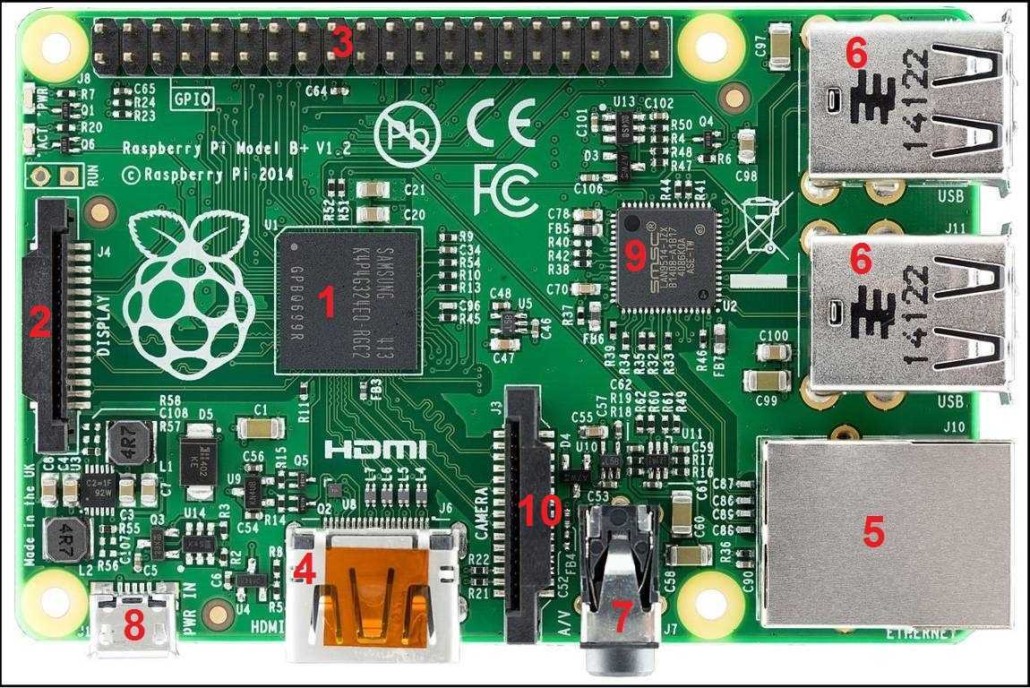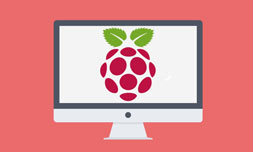Raspberry Pi board
When you get your hands on the Raspberry Pi, the first thing you will notice is that it is really small – its measurments are 85.60mm x 56mm x 21mm (3.37 in x 2.21 in x 0.83 in). The device usully comes without a protective case, so you have a good look at all of the components that make up the device. Let’s examine each component on the board:
1 – a system on a chip (SoC) – an integrated circuit that incorporates many computer components on a single chip – the CPU, memory, and RAM. The Raspberry Pi B+ model uses the ARM1176 700 Mhz processor, the powerful GPU (Graphical Processing Unit) capable of playing HD videos, and 512 MB of RAM.
2 – DSI display connector – used to attach an LCD panel. On the other side of the board is a microSD card slot that holds the operating system.
3 – GPIO (General-Purpose Input/Output) pins – pins used to connect electronics devices. The Raspberry Pi Model B has 26 pins, while B+ has 40.
4 – HDMI port – used for connecting to a monitor or TV. HDMI can carry both sound and picture.
5 – Ethernet port – a standard 10/100 Mbit/s Ethernet port used to connect your device with the rest of the network.
6 – USB ports – standard USB 2.0 ports used to connect peripherals such as a keyboard and mouse. The Raspberry Pi Model B has 2 USB ports, while the B+ Model has 4.
7 – Audio port – a 3.5mm jack used to connect speakers.
8 – Micro-USB power connector – used to power the Raspberry Pi.
9 – USB and Ethernet interface chip
10 – Camera connector – enables the capturing of photographs and videos.




